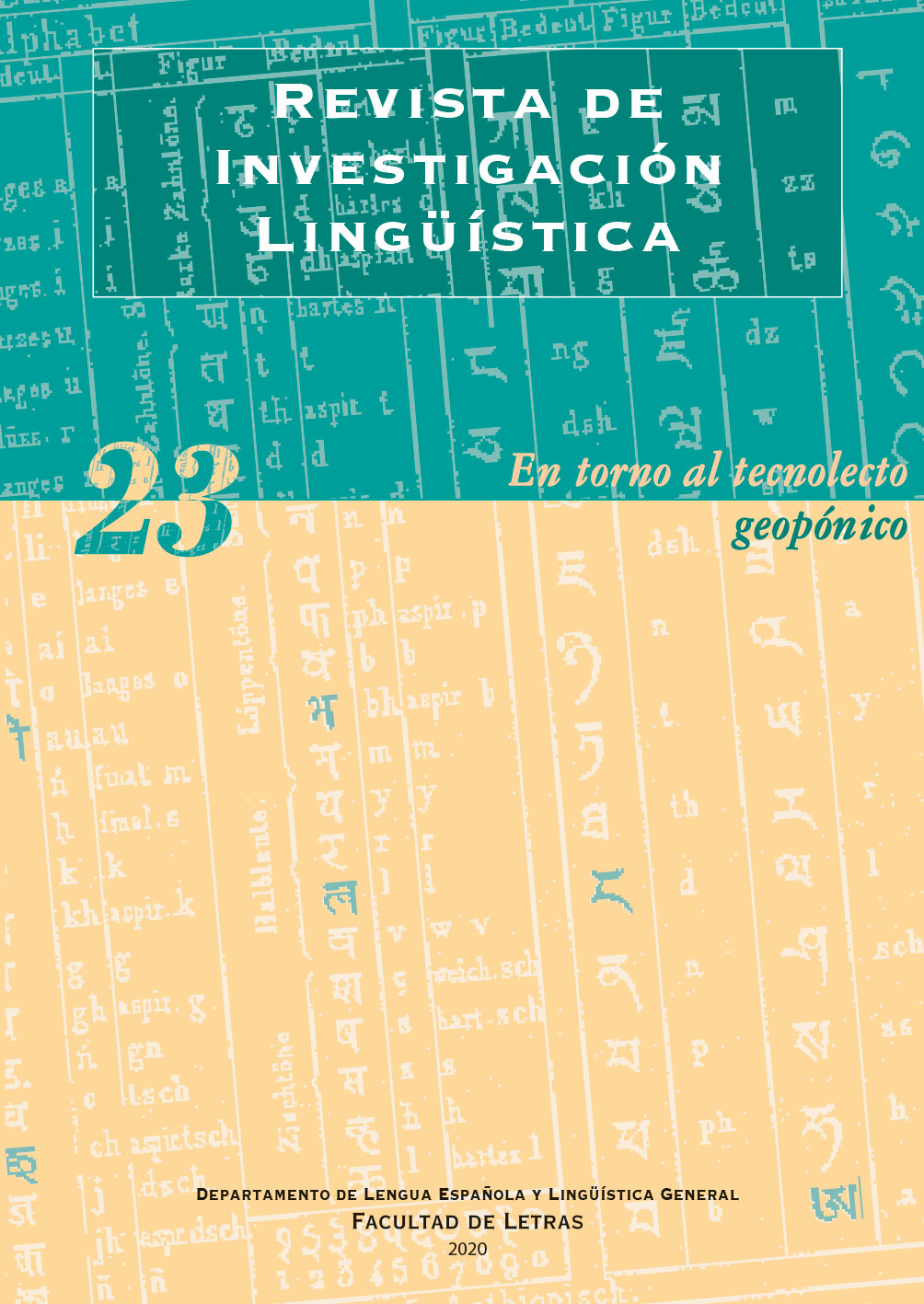Characterization of the LGTBI speaking community discourse. An approach to Hispanic Queer Linguistics
Abstract
Every subculture forms a particular linguistic community in which, although language is shared with the rest of society, speech varies in certain aspects. This is the case of the LGTBI speaking community, which uses a peculiar lexicon, as well as a characteristic phraseology, special grammatical structures and, in short, very striking pragmatic resources which aim is to mitigate certain statements, intensify some others in certain contexts and build affiliate speech acts to express solidarity. In addition, it plays a very important role in the construction of the identity of the speakers. This paper proposes an approximate pragmalinguistic analysis that serves as an introduction to queer linguistic studies within Hispanicism.
Downloads
-
Abstract2487
-
PDF (Español (España))1951
References
Abe, Hideko (2010): Queer Japanese: Gender and Sexual Identities thought Linguistic
Practices, Nueva York, Palgrave Macmillan.
Barret, R. (1995): «Supermodels of the world unite! Political economy and the language
of performance among African-American drag queens», en L. Leap (ed.),
Beyond the Lavender Lexicon: Authenticity, Imagination and Appropriation in
Lesbian and Gay Languages, Buffalo (NY), Gordon & Breach, pp. 207-226.
Barret, R. (2002): «Is Queer Theory important for sociolinguistic theory?», en
K. Campbell-Kibler, R.J. Podesva, S.J. Roberts y A. Wong (eds.), Language
and Sexuality: Contesting Meaning in Theory and Practice, Standford, CA:
CSLI, pp. 25-43.
Bengoechea, Mercedes (2015): Lengua y género, Madrid, Síntesis.
Borba, Rodrigo (2015): «Linguística queer: uma perspectiva pós-identitária para
os estudios do linguagem», Revista Entrelinhas, vol. 9, n. 1, pp. 91-107.
Briz, Antonio y Grupo Val.Es.Co (2002): Corpus de conversaciones coloquiales,
Madrid, Arco/Libros.
Brontsema, Robin (2004): «A queer Revolution: Reconceptualizing the Debate
Over Linguistic Reclamation», Colorado Researchs in Linguistics, vol. 17, Issue
, Boulder, University of Colorado.
Bucholtz, Mary y Hall, Kira (2004): «Theorizing identity in language and
sexuality research», Language in Society, 33 (4), pp. 469-515.
Butler, Judith (1997): Lenguaje, poder e identidad, Madrid, Síntesis.
Butler, Judith (2007): El género en disputa, Madrid, Espasa.
Cameron, D. y Kulick, D. (2003): Language and Sexuality, Cambridge, Cambridge
University Press.
Cameron, D. y Kulick, D. (eds.) (2006): The Language and Sexuality Reader,
Londres, Routledge.
Campbell-Kibler, K., et al. (2002): Language and Sexuality: Contesting Meaning
in Theory and Practice, Standford, CA: CSLI.
Cuenca, M.ª Josep (2008): «Usos de hombre/home y mujer/dona como marcadores
del discurso en la conversación coloquial», Verba, 35, pp. 235-256.
De Lauretis, Teresa (1991): «Queer theory: Lesbian and Gay Sexualities», Differences:
A Journal of Feminist Cultural Studies, 3, 2, pp. iii.xviii. Indianápolis,
Indiana University Press.
Jones, L. (2012): Dyke/Girl: Language and Identities in a Lesbian Group, Basingstoke,
Palgrave Macmillan.
Leap, W.L. (2008): «Queering gay men’s English», en K. Harrington, L. Litosseliti,
H. Sauntson y J. Sunderland (eds.), Gender and Language Research Methodologies,
Basingtoke, Palgrave Macmillan, pp.283-296.
Leap, W.L. y Boellstorf, T. (eds.) (2004): Speaking in Queer Tongues: Globalization
and Gay Language, Urbana, IL,University of Illinois Press.
Leap, W.L. y Motschenbacher, T. (eds.) (2012): «Launching a new phase in language
and sexuality studies», Journal of Language and Sexuality, 1 (1), pp. 1-14.
Livia, A. y K. Hall (eds.) (1997): Queerly Phrased: Language, Gender and Sexuality,
Oxford, Oxford University Press.
Morrish, L. y Sauntson, H. (2007): New Perspectives on Language and Sexual
Identity, Basingstoke, Palgrave Macmillan.
Motschenbacher, Heiko (2010): Language, Gender and Sexual Identity: Poststructuralist
Perspectives, Amsterdam, John Benjamins.
Motschenbacher, Heiko (2011): «Taking Queer Linguistics further: Sociolinguistics
and critical heteronormativity research», International Journal of the
Sociology of Language, 212, pp. 149-179.
Motschenbacher, Heiko (2012): «Queere Linguistik: Theoretische und
methodologische Überlengungen zu einer heteronormativitätskritischen
Sprachwissenschaft», en S. Günthner, D. Hüpper y C. Spiess (eds.), Genderlinguistik_
Sprachliche Konstruktionen von Geschlechtsidentität, Berlin, Walter
de Gruyter, pp. 87-125. International Journal of the Sociology of Language, 212,
pp. 149-179.
Motschenbacher, Heiko (2013): «Focusing on normativity in language and
sexuality studies: Insights from conversations on objectophilia», Critical Discourse
Studies, 10, pp. 49-70.
Motschenbacher, Heiko y Stegu, Martin (2013): «Queer Linguistics approaches
to discourse», Discourse and Society, 24 (5), pp. 519-535.
Navarro-Carrascosa, Carles (2019): «Resignificación y reapropiación en el
español coloquial: el caso de maricón». En Cabedo Nebot, Adrián e Hidalgo
Navarro, Antonio (eds.), Pragmática del español hablado. Hacia nuevos horizontes.
València: Universitat de València, pp. 169-183.
Pereda, Ferran (2004): El cancaneo. Diccionario petardo de argot gay, lesbi y trans,
Barcelona, Laertes.
Portolés, José (1998): Los marcadores del discurso, Barcelona, Ariel.
Rodríguez, Félix (2008): Diccionario gay-lésbico, Madrid, Gredos.
Sáez, Javier (2004): Teoría queer y psicoanálisis, Madrid, Síntesis.
Sauntson, H. (2008): «The contributions of Queer Theory to gender and language
research», en K. Harrington, L. Litosseliti, H. Sauntson y J. Sunderland
(eds.), Gender and Language Research Methodologies, Basingstoke, Palgrave
Macmillan, pp. 271-282.
Copyright (c) 2021 Journal of Linguistic Research

This work is licensed under a Creative Commons Attribution-NonCommercial-NoDerivatives 4.0 International License.
The works published in this magazine are subject to the following terms:
1. The Publications Service of the University of Murcia (the publisher) preserves the economic rights (copyright) of the published works, and favors and allows the reuse of same under the license of use indicated in point 2.
2. The papers are published in the electronic edition of the magazine under a Creative Commons Attribution-NonCommercial-NoDerivative 3.0 Spain license (legal text). Papers may be copied, used, disseminated, transmitted and publicly exhibited if the following requirements are met: i) The authorship and the original source of its publication (magazine, editorial and URL of the work) must be cited; ii) The works cannot be used for commercial purposes; iii) The existence and specifications of this user license must be explicitly mentioned.
3. Self-archiving conditions. Authors can electronically disseminate pre-print versions (version before being evaluated) and / or post-print versions (version evaluated and accepted for publication). This makes possible its circulation and diffusion earlier and with it a possible increase in its citation and reach among the academic community. RoMEO color: green.









